
SRHS
Steamboat Rock Historical Society
100 YEARS OLD
CENTENNIAL 1855-1955
NEW SCHOOL FACILITIES
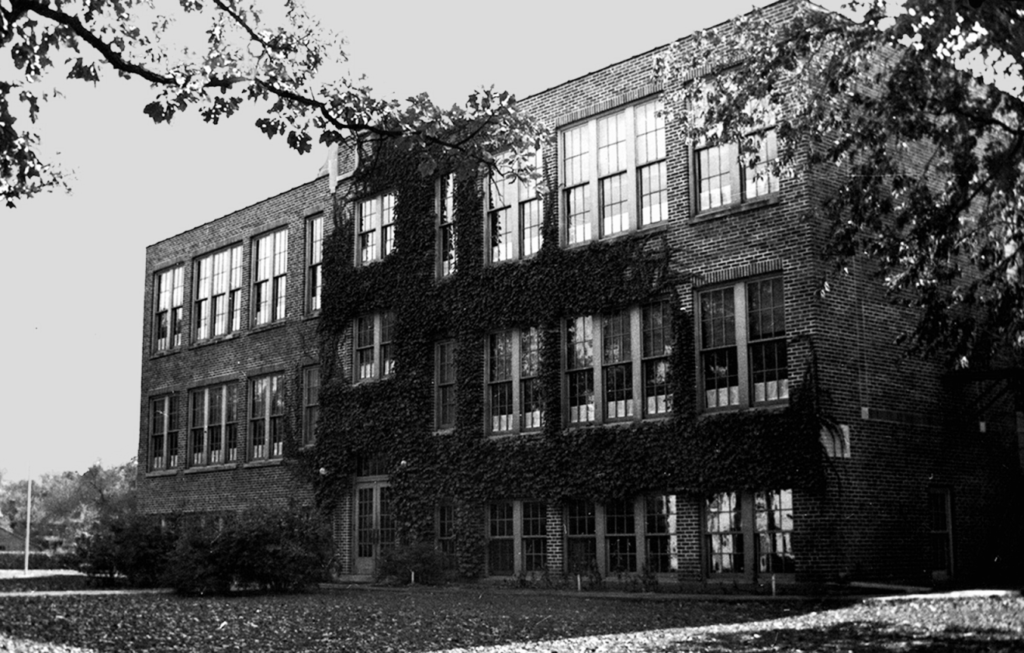

The school building built in 1928, provided ample space for classrooms, laboratories, home economics facilities, and a large room for physical training and athletics. When the school lunch program was started in Iowa and public funds became available, the Steamboat Rock school could not take part for lack of space.
Also, the gymnasium proved to be too small for the expanding athletic activities. Consequently, a new gymnasium building was constructed in 1956-57.
Dennis Holmes recalled, “The hot lunch program started around 1949 or 1950. Lunches were served in the industrial arts room. Meals were prepared in the home ec. across the hall. Charlotte Simister was one of the first cooks.”
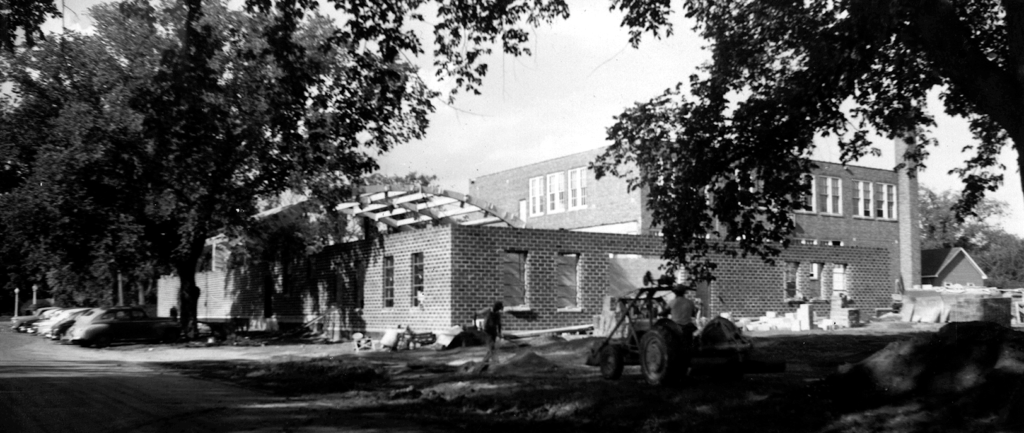
Later Mrs. Arthur Cooper was the head cook. She was followed by Wilma Blosch and later Eleanor Frerichs.
In 1957 the school lunch program was expanded by remodeling the old gymnasium into a kitchen, dining room and store-room.
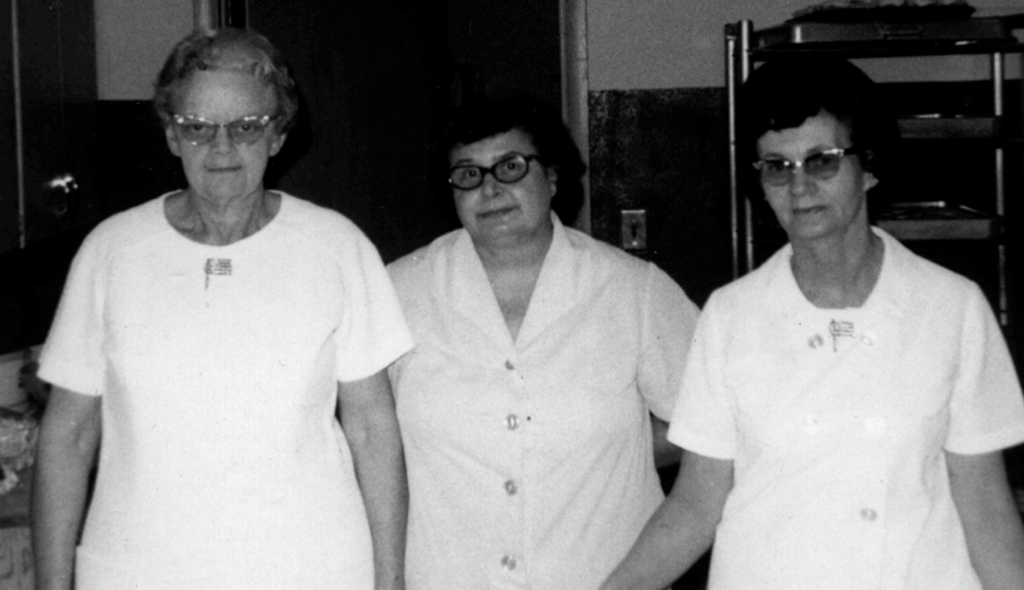
Esther Daleske, Helen Allsion, Wilma Blosch.
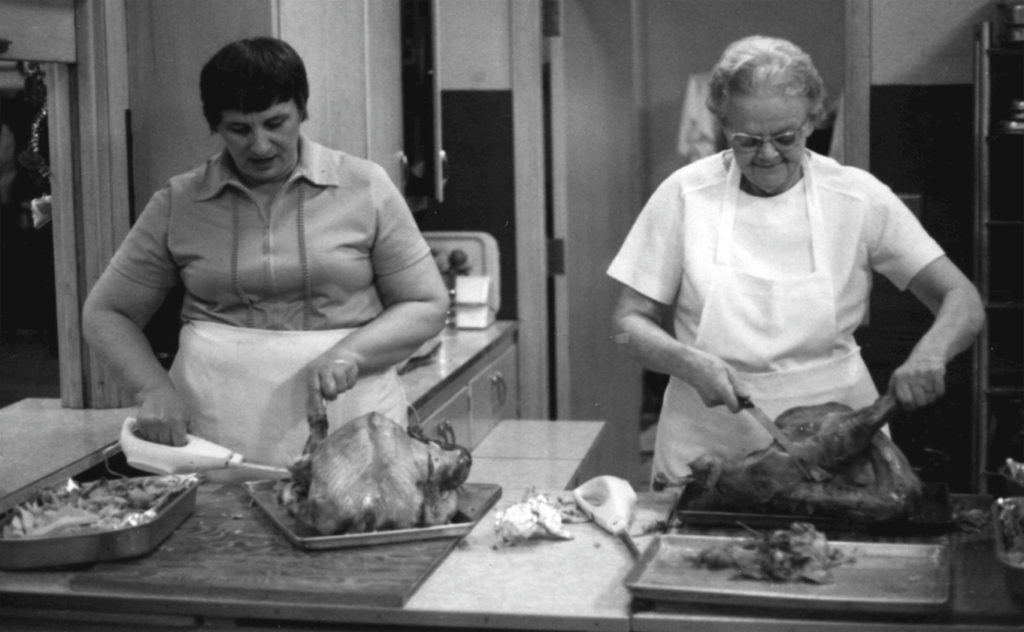
Eleanor Frerichs & Esther Daleke
In addition the upper area of the old gymnasium offered space to add three new elementary classrooms for second, fourth and fifth grades.
At the back of the new gym a new state of the art industrial arts facility was added as well as a band and music room.
Before the new gymnasium was built the school had no auditorium for such public functions as programs, concerts, graduation and Baccalaureate services. Local churches were used for these activities. Now during the construction of the gym and grade school classrooms, special arrangements had to be made as well. The industrial arts room was moved into the location of the old blacksmith shop that had been Steamboat’s school. The second grade class was moved into a temporary annex east of the school building. The fourth grade moved into the building that is now the beauty shop.
The Steamboat Rock school has held to good scholastic standards from the early days of the old building to the present time now joined with the Wellsburg school.
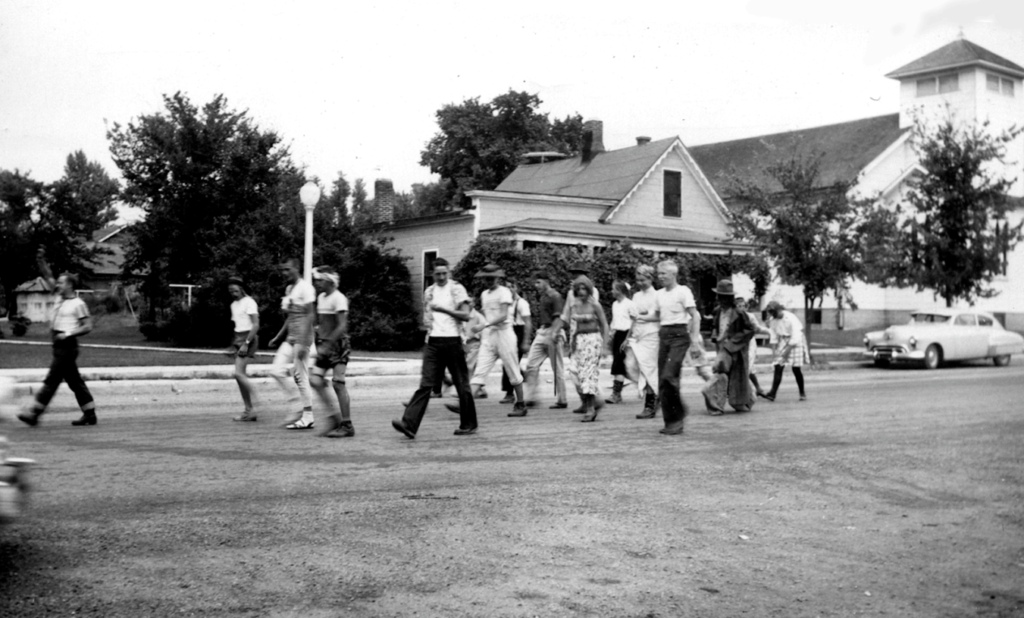
Freshman initiation
Among the superintendents that served the Steamboat Rock School from its beginning in 1856, with some names missing between 1856 and 1898 we know the following: Lizzie Kadoo, W.A. Doran, Steve Fitz, O.B. Chassell, G.C. Hoyt, Robert Morse, A.A. Smith, A.C. Halden, Frank Durand, Miss McSeiggin, Cary Hale, Fred Kutzli, R.E. Grawe, W. I. Sayer, R.G. Smith, C.B. Hightower, W.A. Scott, K. E. Amsberry, L.A. Simister, Fred Nus, R.A. Beane, D. M. Rhoads, R. A. Lechnir, and Neil OKones.
Although the Steamboat Rock Community School was among the smallest in the state, its students always participated in extra-curricular activities such as vocal and instrumental music, speech, dramatics and athletics in competition with other schools. It always held it’s place, during a very competitive era, scholastically as well. Over the years the school earned a disproportionate number of first ratings for the size of the school.
The school, too, has always been the center of community life. It has been most instrumental in the welding of a great spirit of cooperation and unity between citizens of the town and country. The school has contributed largely to the progressiveness and continuing advancement found in Steamboat Rock.
One teacher who came to Steamboat Rock in the early ‘60’s when it was first hinted by the State of Iowa that small schools were no longer viable was Kay Roelfsema. Kay was born on a Wyoming cattle ranch, and grew up wanting to be a trick rider, but ended up a school teacher in Steamboat Rock. Kay, who taught English and French in Steamboat Rock in the 1960’s and ‘70’s, had started her schooling in a one-room log schoolhouse. She often arrived on horseback or skis. When she was not in school, she often played teacher with her dolls lined up as pupils.
When the State of Iowa mandated the teaching of a foreign language in high school, Steamboat Rock Superintendent Don Rhoads convinced Kay, who was then living in Whitten, Iowa, that she should apply for the French/English position.
Kay said it was one of the best decisions of her life! In Steamboat Rock, she came in contact with Marie (Mrs. Johnny) Gast, a World War I war bride from France, who not only became Kay’s mentor but a dear friend. Mrs. Gast devoted many volunteer hours teaching songs and French culture, and on special occasions preparing culinary treats for which the French are famous. French students will remember choux `a la cr`eme (cream puffs), petits fours (small frosted cakes), etc.
While Kay taught in Steamboat Rock, many parts of the United States were plagued by forces undermining the principles which had made this a great nation. Through it all, the town remained a bastion for high moral ground. Most students were respectful and eager to learn, and with small classes it was an ideal teaching situation.
Contest speech was also one of Kay’s assignments. She built a strong program with approximately two-thirds of the high school participating each year in the Iowa High School Speech Association (IHSSA) contests. There was no super state at that time but Kay felt sure a number of Steamboat Rock students would have qualified. Hesitating to name them off the top of her head for fear of forgetting someone, Sue Asher, Debbie Ehmen, Donna Ehman, Gary Eiten, Terry Folkerts, Jane See and Carol Taylor came immediately to her mind. Beside IHSSA contests, some students braved the fierce Iowa Forensic League competition. In one tournament, Keith Eiten and Debbie Folkerts were named state champions in interpretive reading, beating out duos from such schools as Cedar Rapids, Des Moines, and Waterloo and bringing home a championship trophy.
Exciting as the coaching of speech was for Kay, classroom teaching was just as rewarding. Exploring ideas with eager young students was for her every bit as exhilarating as standing up on a galloping horse charging around a rodeo arena would have been… and probably safer.
The school has always excelled academically as well as in speech, music and sports, graduating men and women who became doctors, nurses, lawyers, politicians, teachers, scientists, engineers, tradesman, merchants, pastors and missionaries.
© 2020 Steamboat Rock Historical Society | All Rights Reserved
Powered by Hawth Productions, LLC